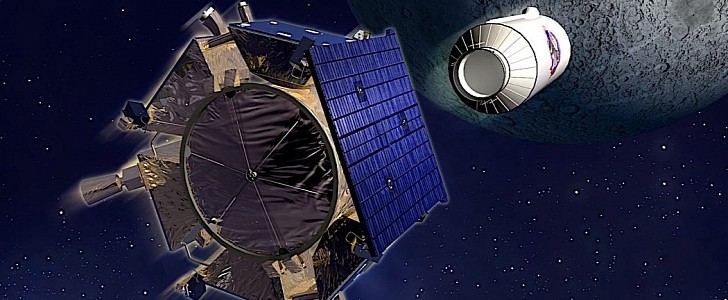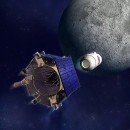After a long history of battling each other on or in close proximity to our planet, Elon Musk’s SpaceX and Jeff Bezos’ Blue Origin had a skirmish or two about who’ll be the first to reach the Moon. So much so, that NASA even hinted how that pushed the Artemis lunar landing beyond the original schedule.
For what it’s worth, at least for now, the American space agency sticks with its choice of having SpaceX design the Artemis lunar lander, meaning it will be Elon Musk’s company that will put American boots on our planet’s satellite first.
But SpaceX will reach that destination as soon as this March. Granted, it won’t do it the way it intended, in an organized fashion, but by means of a leftover Falcon 9 upper stage that should slam into the Moon.
We, humans, are known to have left tons of garbage floating around in space, but this will be the first time ever when “a human-made debris item unintentionally reaches our natural satellite,” according to the European Space Agency.
The piece of Falcon 9 has been floating in space for a long time now. It was launched in 2015 to take to orbit the National Oceanic and Atmospheric Administration’s (NOAA) DSCOVR climate observatory. It was not near-orbit, but the L1 Lagrange point, located 1.5 million km (932,000 miles) away from our planet, and that’s the reason why the upper stage ended up floating away.
“This rendered a deorbit burn to dispose of it in our planet’s atmosphere impractical, while the upper stage also lacked sufficient velocity to escape the Earth-Moon system. Instead it was left in a chaotic Sun-orbiting orbit near the two bodies,” says ESA.
After crunching in the numbers, scientists believe the Falcon will impact the Moon on March 4 on the far side, near the equator, meaning no one will be able to see the moment of the impact or its results. Weighing 3 tons and measuring 15 meters (49 feet) long, it will hit at an estimated 9,288 kph (5,771 mph), probably leaving a major crater in its wake.
But SpaceX will reach that destination as soon as this March. Granted, it won’t do it the way it intended, in an organized fashion, but by means of a leftover Falcon 9 upper stage that should slam into the Moon.
We, humans, are known to have left tons of garbage floating around in space, but this will be the first time ever when “a human-made debris item unintentionally reaches our natural satellite,” according to the European Space Agency.
The piece of Falcon 9 has been floating in space for a long time now. It was launched in 2015 to take to orbit the National Oceanic and Atmospheric Administration’s (NOAA) DSCOVR climate observatory. It was not near-orbit, but the L1 Lagrange point, located 1.5 million km (932,000 miles) away from our planet, and that’s the reason why the upper stage ended up floating away.
“This rendered a deorbit burn to dispose of it in our planet’s atmosphere impractical, while the upper stage also lacked sufficient velocity to escape the Earth-Moon system. Instead it was left in a chaotic Sun-orbiting orbit near the two bodies,” says ESA.
After crunching in the numbers, scientists believe the Falcon will impact the Moon on March 4 on the far side, near the equator, meaning no one will be able to see the moment of the impact or its results. Weighing 3 tons and measuring 15 meters (49 feet) long, it will hit at an estimated 9,288 kph (5,771 mph), probably leaving a major crater in its wake.






